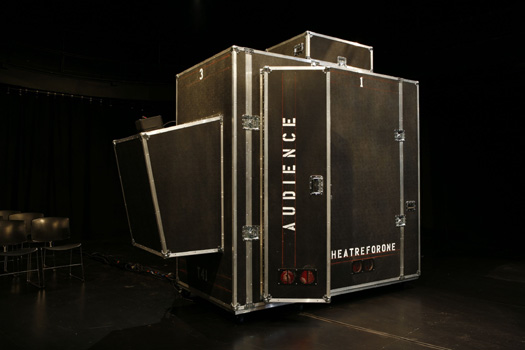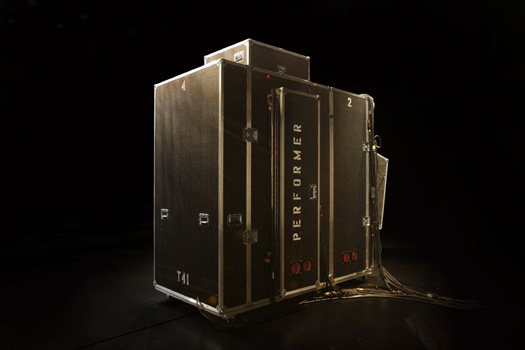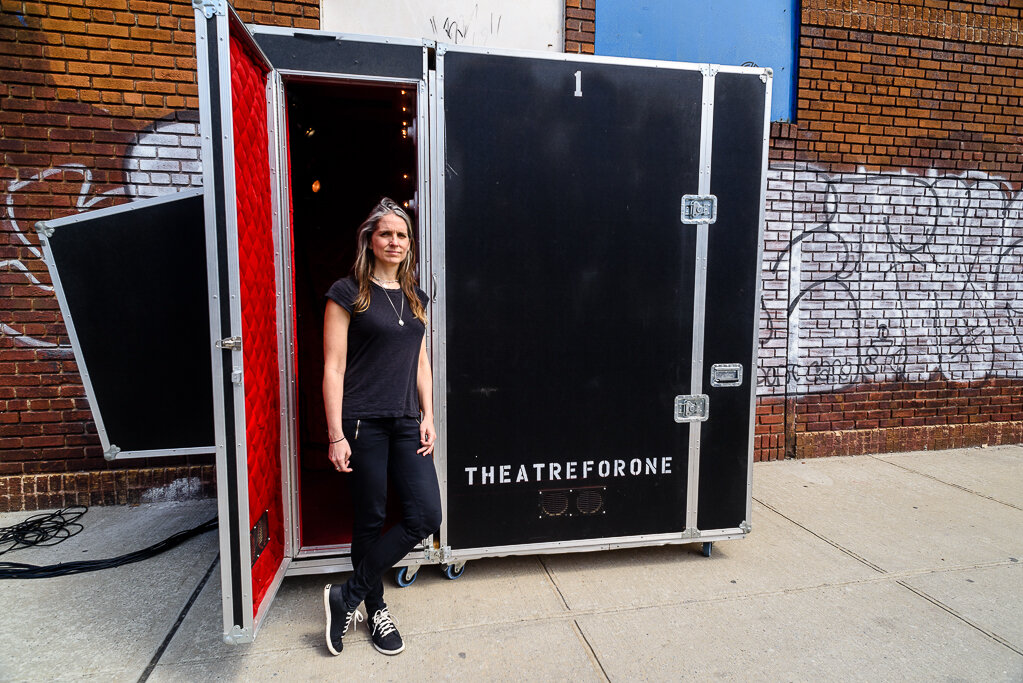About Theatre For One
MISSION
Theatre for One is a mobile state-of-the-art and COVID safe performance space for one actor and one audience member. Conceived by Artistic Director Christine Jones and designed by LOT-EK architects, Theatre for One commissions new work created specifically for this venue's one-to-one relationship. Embracing serendipity and spontaneity, Theatre for One is presented in public spaces in which audience members are invited to engage in an intimate theatrical exchange and enter the theatre space not knowing what to expect. Actor and audience member encounter each other as strangers in this suspended space and through the course of the performance allow the divisions and distinctions that separate us to dissolve.
CONCEPTION, DESIGN AND FABRICATION
I once heard someone describe himself as a "serial epiphanist" and identified with the description. I am continually in search of transcendent experiences and the circumstances that foster them. What elements create the portals that allow us to experience a person, a place, or a performance ecstatically? The consideration of theatrical settings as sacred spaces aroused an interest in the idea of designing a church, but as I do not practice religion formally, and am not an architect, I realized I was unlikely to receive a commission. It occurred to me that I could design a Church for One and build it myself.
Artistic Director Christine Jones. Photo by Daria Sneed, courtesy of Arts Brookfield
At the reception of a wedding in October of 2002, a magician standing very close to me performed a magic trick for me. I was struck by the increased impact the effect had when it was done for an individual, intimately. I developed an instantaneous crush on the magician who had just pulled my nine of hearts out of his mouth. Experiencing the private version of a normally public act was intoxicating. I became obsessed with how to re-experience that feeling. A question was born: By distilling the relationship between performer and audience into a space private enough to feel extremely intimate, but safe enough to allow the audience member a full range of responses, could the likelihood of a transcendent experience be increased?
I realized there were precedents for this kind of space, namely peep show booths and confessionals, as well as psychotherapy offices, phone booths, Maxwell Smart's cone of silence, and any two seats next to each other in which the departure and arrival time create their own spatial intimacy. I began doing research and in the process of conceiving a proposal for New York Theatre Workshop's Larson Lab I was fortunate to meet Danny, who builds most of the peep show booths in Manhattan. He gave me a chair to use for the first prototype (T41-1), which was built at NYTW and used for the Lab in April 2003.
In May 2007, with an opportunity at Princeton University and with the support of True Love Productions, I was able to build a second prototype, (T41-2). I was realizing that though small, Theatre for One™ was a building unto itself that required the same considerations that a full-scale theatre would demand. I had seen the StoryCorps booth at Grand Central Station and been inspired by its sleek design in the service of its mission, and I was hungry for collaborative design input.
I approached architect Ada Tolla of LOT-EK, believing her aesthetic and bright spirit would be a good match for the project. Ada, her partner Guiseppe Lignano, and project architect Baptiste Thevenon, had the inspired impulse of using the vocabulary of rock 'n roll road boxes. It was a perfect marriage of ideas. Looking at guitar cases and equipment containers on wheels, we could see that the shape of the contents dictated the shape of the box. The juxtaposition of a hard exterior meant to withstand the wear and tear of mobility, with a padded, sometimes red velvet interior, felt like the perfect combination of materials for a space intended to reveal its secrets once you are inside. Theatres are often described as "black boxes", The notion to make a "black box", out of black boxes was simply dead on.
--CHRISTINE JONES, Artistic Director
Theatre For One is led by Artistic Director Christine Jones
Produced by Octopus Theatricals (Mara Isaacs, Executive/Creative Producer)
Originally Produced by True Love Productions


















Photography by Danny Bright.

